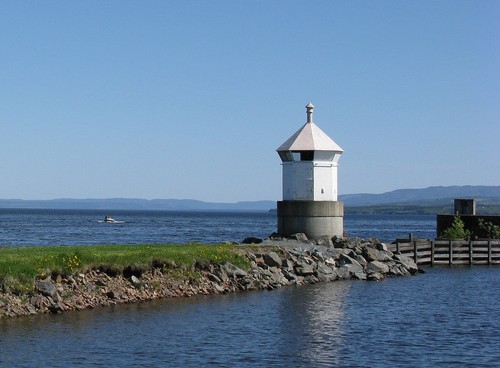Located about 100 km (60 mi) north of Oslo, Lake Mjøsa is Norway's largest lake. It extends north to south through the mountains for about 117 km (73 mi). Its greatest width is 15 km (9 mi) but for most of its length it is about 5 km (3 mi) wide. Navigation on the lake is receational except for the historic paddlewheel steamboat Skibladner, which sails between Eidsvoll at the southern end of the lake and Lillehammer near the northern end.
Norway is divided into 15 counties (fylker) and the counties are divided into townships (kommuner). In 2020 mergers decreed by the national government reduced the number of counties. Before the mergers the east side of the lake was mostly in Hedmark County and the west side was mostly in Oppland County. These two counties were merged to form a new county called Innlandet.
In Norwegian a lighthouse is a fyrtårn (fire tower) or simply a fyr; a fyrlykt is a beacon and a lyktehus is a lantern. Øy is an island, holmen is an islet, skjær is a skerry (a tiny island or rocky reef), sund is a strait (often between an island and the mainland), bukt is a bay, nes is a headland, and havn is a harbor.
Aids to navigation on the lake are privately maintained; they are not on the international light lists.
- General Sources
- Norwegische Leuchttürme
- Photos by Klaus Huelse.
- Navionics Charts
- Navigation chart for the lake.

Gjøvik Light, Gjøvik, May 2008
ex-Flickr
photo copyright
Andreas Fritsche; used by permission